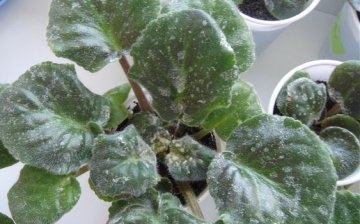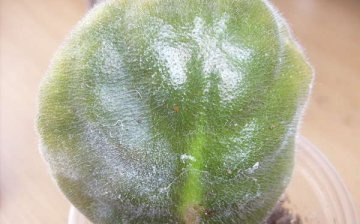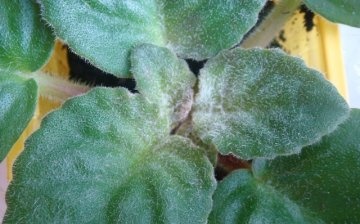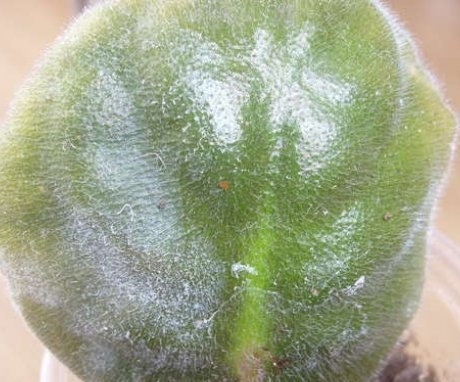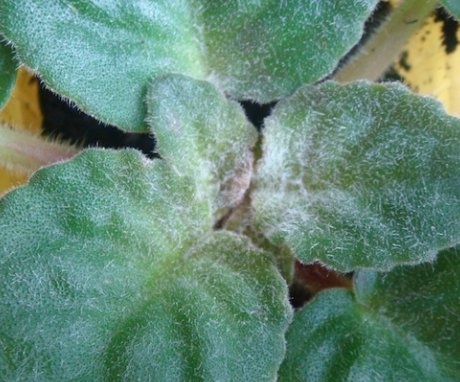Powdery mildew on violets: symptoms and treatment methods
Loved by many violet the room is quite capricious, demanding and needs special attention. Under favorable conditions, it pleases the eye with its delicate velvety leaves, modest, but such touching flowers. But this wonderful plant is defenseless against diseases that affect it and sometimes lead to death.
Content:
- Conditions for keeping violets
- Diagnosis of plant disease
- Powdery mildew and downy mildew
- Symptoms of the disease
- Violet treatment methods
- Preventive measures
Conditions for keeping violets
For a violet to feel great, several prerequisites must be met:
- The pot should not be offered to the plant for growth, so that its root system completely fills the soil;
- The soil should be loose, balanced in acidity, saturated with an optimal amount of nutrients, including phosphorus and potassium, but without an excess of nitrogen;
- The moisture of the soil and the environment should not be excessive, but the violet suffers a constant lack of moisture no less painfully;
- A balanced temperature regime is an important condition for the health and beauty of a violet, for which both excessive heat and cold are equally harmful;
- Adequate lighting must be provided, but direct exposure to the sun can cause extensive burns and even death of the entire plant;
- Timely ventilation, but without drafts, should provide an influx of fresh air necessary for the full growth and development of the violet.
Diagnosis of plant disease
The causative agents of the disease are fungal spores that are spread indoors, in water, on contact with hands after touching infected plants. At the first stage of the disease, violet leaves become unkempt, as if sprinkled with flour.
If urgent measures are not taken in time, the second stage of the disease begins with the appearance of irregularities and ulcers, and the mealy plaque spreads more and more, affecting not only the diseased plant, but also those adjacent to it. As a result, the leaves die off, fall off, the plant stops in its development and dies.
Powdery mildew and downy mildew
On close examination, you can find the mycelium that has not yet thrown out the spores, glued to the leaf with special suction cups. The leaf on which the first dirty ball appeared must be destroyed immediately. Ripe and hardened, brown mycelium gradually deforms the leaf, which is covered with grayish mold from below.
Downy mildew differs from powdery mildew in the presence of reddish-brown and light green spots, while the real one is limited to a white bloom, which significantly weakens the plant's immunity.
The fungus develops especially actively in a damp and cool room with stagnant air, when the temperature regime ranges from low indicators at night to sharply increased on windowsills illuminated by the sun during the day.
Powdery mildew on violets is one of the most common fungal diseases, which visually fully justifies its name.
Symptoms of the disease
Powdery mildew on violets appears as a white powdery bloom on the leaves and flowers of the plant and gives the impression that the plant is sprinkled with flour.When a plant is affected by powdery mildew, a kind of dust and even dirt accumulates at the place where the violet is located, near its pot.
That is why the first step in the fight against this disease of violets is to regularly clean the place of its location. It is also necessary to wash the pots and trays on which they are placed from time to time.
Very often powdery mildew on violets occurs as a result of insufficient lighting or high humidity at low temperatures, so very often this disease affects violets in the cold season, especially if the pots with plants are placed in the back of the room.
Powdery mildew is especially pronounced on violets, the soil of which is oversaturated with nitrogen, but which lacks phosphorus and potassium.
Violet treatment methods
To heal violets, it is necessary to treat the plant and the violets next to it with a special solution, for example "Topaz". Very often one treatment is enough, but most often the fight against powdery mildew requires repeated treatment.
At the very beginning of the defeat of the fungus, you can try to use such a folk recipe: sprinkle the flower rosette with sulfur powder and cover with a plastic bag. If the temperature under the hood is raised to +25 degrees, then the evaporating sulfur enzymes are capable of destroying powdery mildew spores in the bud.
A good effect can be achieved by treating an infected plant with a solution of soda and laundry soap in the ratio: in a liter can of water, mix 5 grams of soda and 4 grams of soap. From natural ingredients, you can take the grass soaked in the evening horsetail, which is then boiled for half an hour, cooled, filtered, diluted in water, used for spraying.
Undiluted broth brought to a boil and cooled garlic infusion can also successfully fight powdery mildew.
Preventive measures
The best cure is prevention illness... To prevent the violet from getting sick, care should be taken to ensure that all conditions are strictly met.
Do not rush to put the newly acquired plant on the windowsill next to the already existing flowers, but arrange for it in quarantine for at least a month.
Do not keep plants in close proximity to each other. For transplanting, it is better to use land from the forest or from a summer cottage, take it as far as possible from the city. In a flower farm, greenhouse or greenhouse, the soil can be infected, so it must be processed by freezing or calcining. If you take care of a plant with attention and care, it will generously thank you with its beauty.



